You’ve seen the viral recipes, fired up your own Korean BBQ, and stocked your pantry with kimchi—but the real magic of Korean cooking lives in the hacks no one’s talking about. These aren’t trendy TikTok tips—they’re the quiet, genius moves behind every perfect bite. Wondering why banana peels suddenly belong in your kitchen routine? Keep reading—a few of these may change the way you cook forever.
Wipe Hot Pan with Salted Cloth

Before grilling meat or frying eggs, wipe your hot pan with a salt-dampened cloth. It seasons, deodorizes, and preps your surface without harsh chemicals.
The salt removes any old residue or oil odors, and it is especially useful in iron pans used for strong-smelling dishes like fish or pork belly.
It’s a quiet kitchen ritual with major benefits. Cleaner pans, better flavor, and less sticking—all thanks to a pinch of salt and a simple cloth.
Rub Garlic Cloves with Salt for Easy Peeling

Struggling with stubborn garlic skins? Sprinkle salt over the cloves and rub with your hands. The coarse grains help break the skin’s grip almost instantly.
This time-saving trick also lightly seasons your hands, perfect if you’re prepping garlic for a savory dish. No more fiddling with tiny peels or sticky fingers.
It’s a humble hack that feels like magic. Garlic prep becomes faster, neater, and oddly satisfying—all thanks to a common seasoning already at your fingertips.
Use a Rice Cooker for More Than Rice
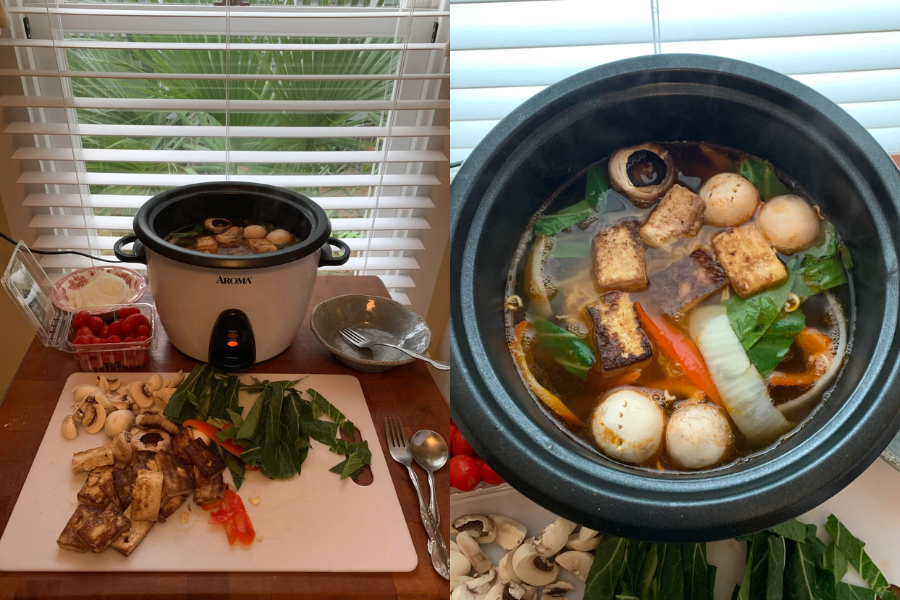
Your rice cooker is a secret multitasker. Beyond rice, it steams dumplings, simmers stews, even makes kimchi jjigae—set it, forget it, and savor the results.
It’s a time-saver that’s surprisingly versatile. Many Korean home cooks rely on it for simple one-pot meals without hovering over a stove.
Think outside the grain. With just a few tweaks, your humble rice cooker becomes a powerful all-purpose tool in any Korean kitchen.
Use Scallion Root Tips for Ultra-Savory Broth
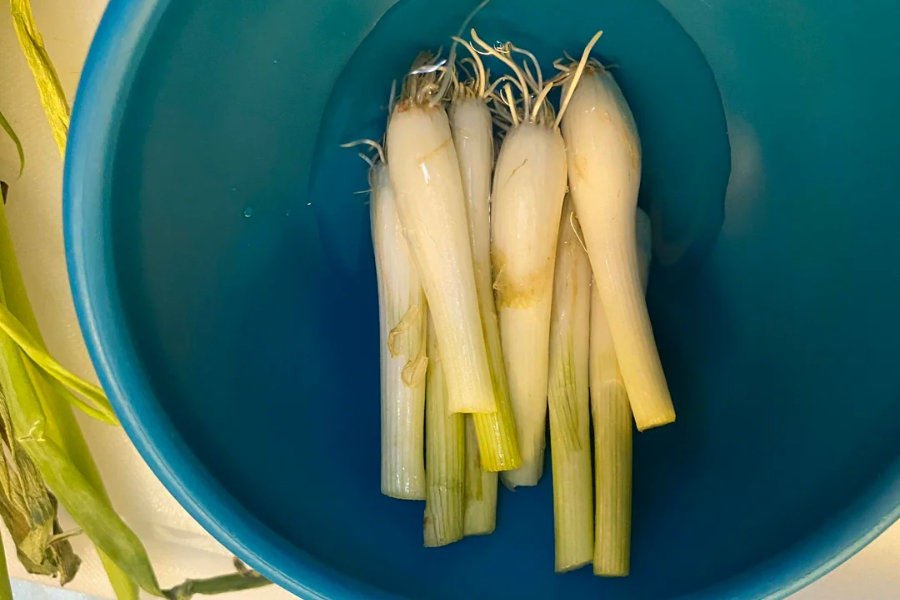
Don’t toss scallion roots! Those little white ends pack bold flavor. Simmer them in broth for a savory, onion-rich depth that outperforms bouillon.
Root tips are often discarded, but Korean soups and stews gain serious body from them. They release more aroma than the leafy tops.
It’s sustainable and delicious. Every inch of the scallion becomes useful, especially in dishes where subtle, deep flavors make the biggest impact.
Cut with Scissors, Not Just Knives

Koreans don’t just use scissors for wrapping paper. In kitchens, they’re slicing bulgogi, trimming noodles, and even chopping kimchi. It’s faster, cleaner, and incredibly precise.
Forget struggling with slippery knives or stained cutting boards. Scissors go right into the pan, creating fewer dishes and more control during prep.
Once you try it, there’s no going back. A good pair of kitchen shears might just become your sharpest tool—literally and figuratively—in Korean cooking.
Toast Garlic Slices in Sesame Oil

Garlic and sesame oil? Match made in heaven. Toasting thin garlic slices in sesame oil unleashes a nutty, savory aroma that enhances any Korean side dish.
These golden slices are crispy flavor bombs. They perfectly top rice, noodles, or namul, adding crunch, depth, and a bit of aromatic drama to your meals.
It’s an easy upgrade with major payoff. Just a few slices transform simple dishes into something addictive and restaurant-worthy.
Use Soju to Wash Off Meat Odors

Soju isn’t just for drinking—it’s a meat-cleaning miracle. Rinse pork or beef with a splash of soju to eliminate strong, gamey odors before cooking.
Alcohol in soju breaks down residual blood and fat particles that cause unpleasant smells. It’s especially effective for off-cuts or thicker meats like pork belly.
This trick is popular in Korean BBQ prep for a reason. Cleaner meat equals cleaner flavor—and that makes all the difference when grilling or stewing.
Add Half a Crushed Apple to Your Soy Sauce Marinade

Crush half an apple into your soy-based marinades for natural sweetness and enzyme-rich tenderness. It’s a classic bulgogi hack that adds more than just flavor.
The fruit’s enzymes help break down meat fibers, making cuts juicier and more absorbent. Apple’s sugars also caramelize beautifully during grilling or pan-frying.
Skip the sugar and use apple instead—it’s healthier, tastier, and authentically Korean. You’ll notice the difference after just one batch.
Press Down on Raw Marinated Meats
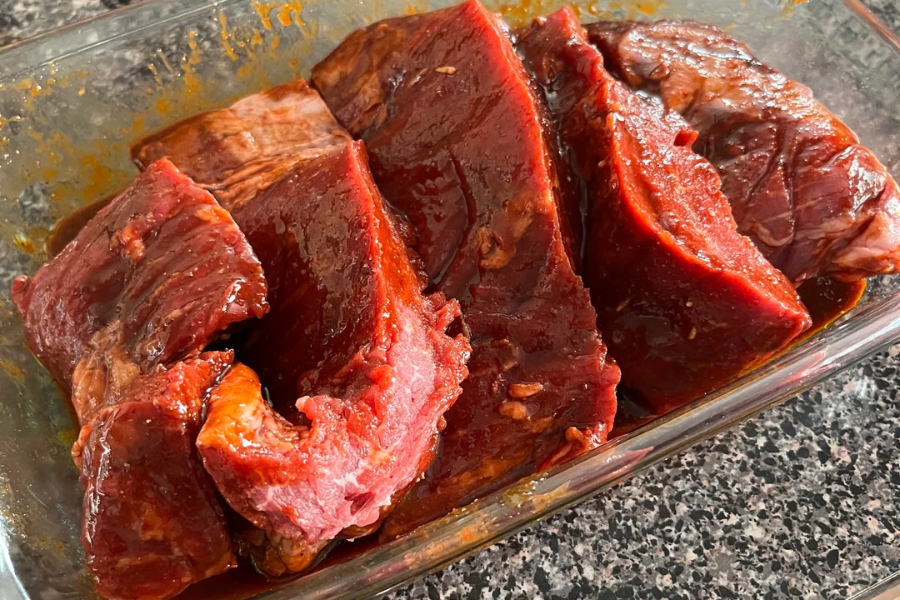
Marinating meat? Don’t just wait—press. Placing a weighted object over marinated meat speeds up absorption and improves texture in dishes like bulgogi and galbi.
It mimics vacuum marinating, pushing flavor deep into the meat’s fibers. The result? Tastier bites with better caramelization when cooked.
This technique is quick, easy, and incredibly effective. No fancy tools are needed, as long as you have a heavy plate and a little kitchen patience.
Make Soy Sauce Eggs in Leftover Marinade
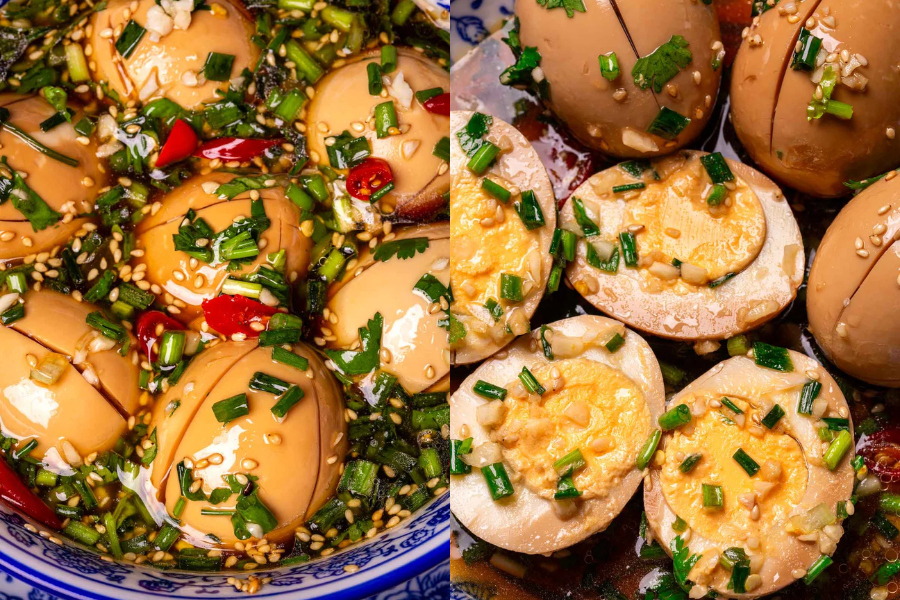
Don’t toss that bulgogi or galbi marinade—drop in boiled eggs instead. The flavors soak in beautifully, creating deliciously savory soy sauce eggs within hours.
These eggs are perfect in lunchboxes, over rice, or as a snack. They transform leftovers into something new, rich, and full of umami.
It’s economical, efficient, and seriously tasty. This hack proves that in Korean kitchens, nothing goes to waste—especially flavor.
Slather Oil on Hands When Making Rice Balls

Sticky rice got you stuck? Rub a little sesame or cooking oil on your palms before shaping rice balls. This keeps the rice from clinging and adds flavor.
This old-school hack is how Korean moms shape perfect jumeokbap without a mess. It’s faster, cleaner, and adds a subtle aromatic gloss to every bite.
Ditch the gloves—oil is your new best friend. You’ll shape faster and enjoy the bonus of an instantly seasoned surface.
Soak Short-Grain Rice for a Fluffier Texture

Short-grain rice is a staple, but its magic depends on preparation. Soak it for 30 minutes before cooking, and you’ll unlock fluffier, more cohesive grains.
This simple trick makes your rice perfect for kimbap, bibimbap, or any dish where texture matters. It’s the difference between sticky and sublime.
Soaking evenly hydrates the grains, reducing cooking time and improving mouthfeel. It’s an old-school hack with consistently delicious results.
Fan Cooked Rice for Glossy, Perfect Grains
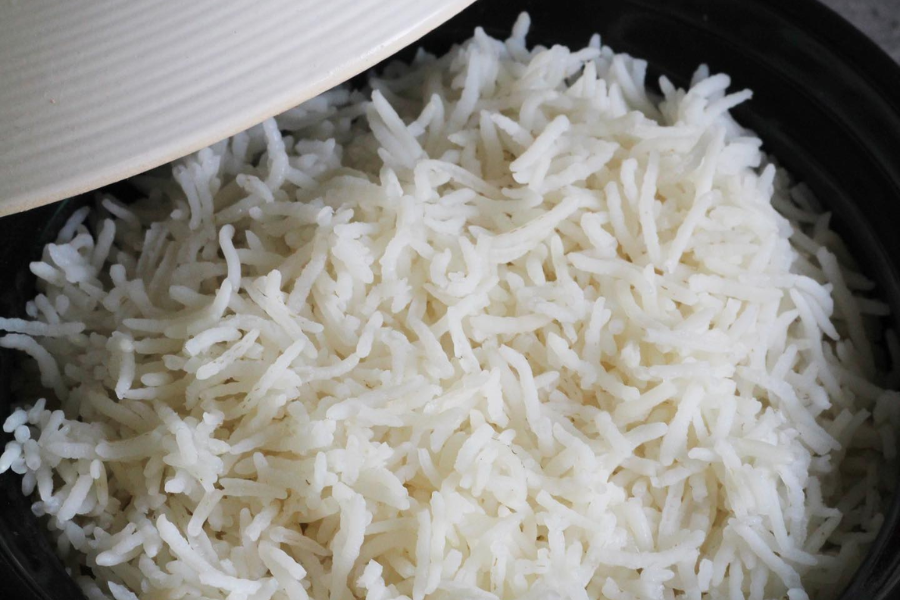
Right after cooking, fan your rice for one to two minutes. This evaporates surface moisture and firms up grains, making them shinier and less sticky.
It’s an age-old trick borrowed from sushi chefs—and it works brilliantly for Korean rice too. The difference in texture is subtle but unmistakable.
Fluffy yet structured rice is key to bibimbap and kimbap. This simple ritual ensures your grains hold up under sauces, proteins, and side dishes.
Mix Oil in Kimbap Rice
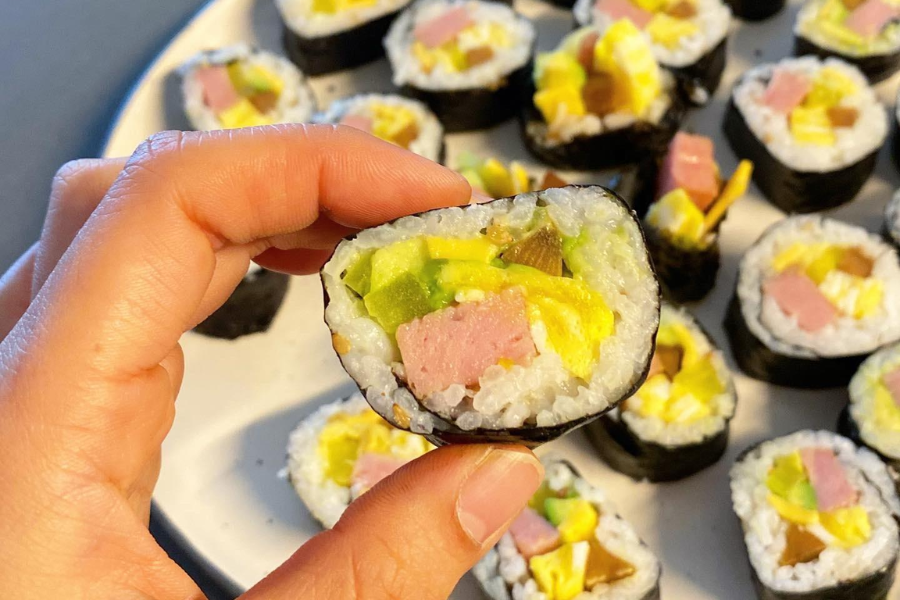
Ever wonder why kimbap rice tastes so fragrant and never dries out? The secret’s a splash of sesame oil stirred in while the rice is still warm.
It adds aroma, sheen, and moisture-locking richness. Say goodbye to bland, sticky clumps here and there. Now, you’re left with smooth, flavorful rice that holds its shape beautifully in every roll.
This isn’t just a flavor boost—it’s structure insurance for picture-perfect kimbap that tastes as good as it looks.
Warm Knife with Hot Water for Seamless Gimbap Cuts

Tired of messy gimbap slices? Dip your knife in hot water before cutting. The heat glides through rice, seaweed, and fillings without tearing or sticking.
This technique ensures clean, professional-looking pieces—no more gimbap crumbling apart mid-slice. It’s the secret behind those perfect rolls at your favorite kimbap shop.
A simple rinse under hot water can dramatically elevate your home gimbap game. It’s an elegant touch that makes slicing smooth and satisfying.
Cool Down Noodles with Ice
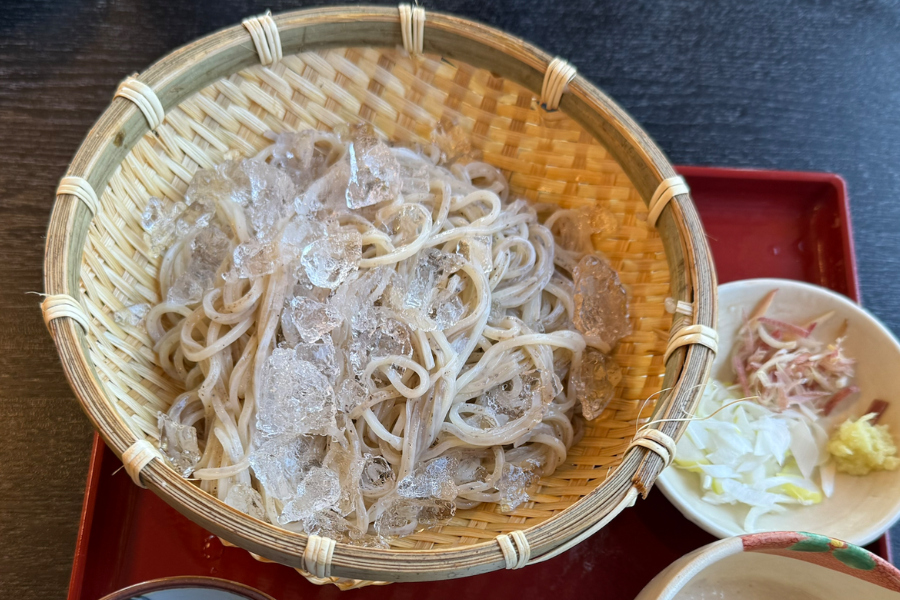
When cooking naengmyeon or bibim-naengmyeon, rinse the noodles in ice water. This firms their texture and locks in that signature cold, chewy bite.
The shock of cold water halts cooking and tightens the noodles. It’s essential for that refreshing snap in Korea’s favorite cold noodle dishes.
The difference is immediate and delicious. Icy rinses deliver perfect noodles every time, especially when summer demands cool, crisp flavors.
Rub a Slice of White Radish on Greasy Pans
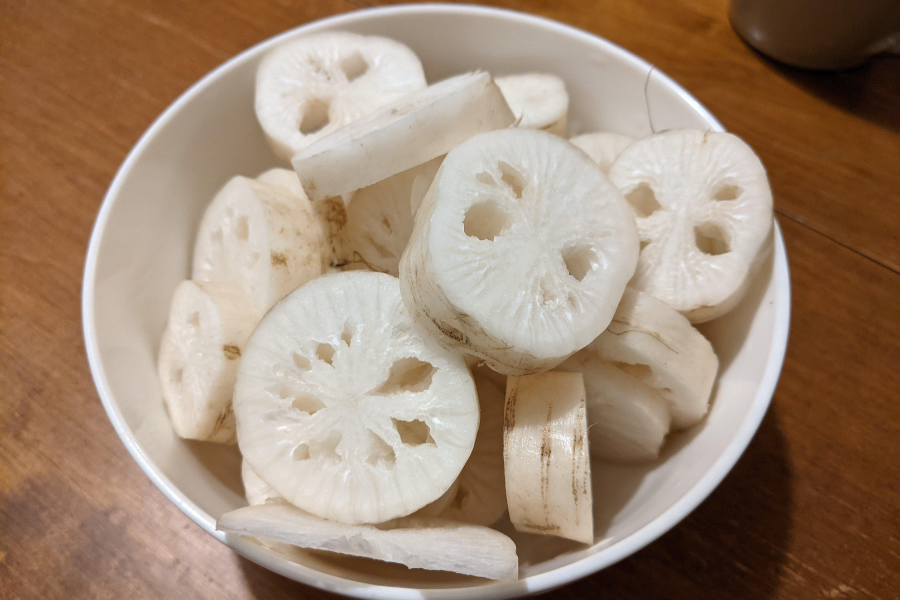
Got a gritty pan after frying meat? Grab a raw slice of Korean white radish (mu) and rub it directly on the surface—it cuts grease naturally and effectively.
The radish acts like a sponge and scrubber in one. Its coarse texture absorbs oil while gently polishing, leaving your pan cleaner without soap or chemicals.
It’s a farm-to-clean solution that really works. Old-school Korean moms swear by it, especially for cast iron or carbon steel cookware after pork belly or fish.
Soak Clams in Salted Rice Water with an Iron Spoon
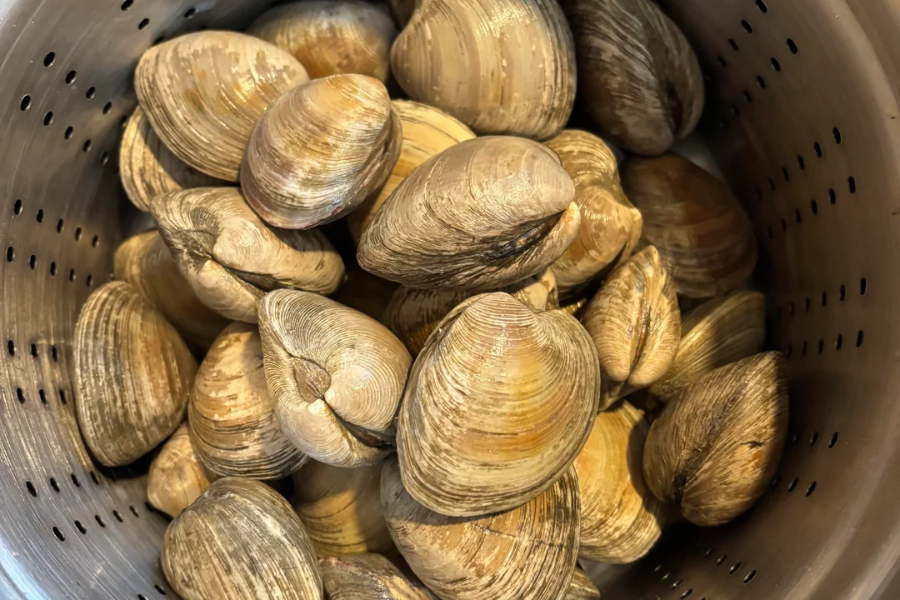
Cleaning clams doesn’t have to take hours. Soak them in salted rice-rinse water with an iron spoon—they’ll purge sand faster and more completely.
Rice water encourages clams to spit out grit. Iron reacts with minerals, stimulating even deeper cleansing—a clever chemical trick used in Korean seafood prep.
Fresh, clean clams in under 30 minutes? It’s not magic—it’s smart science and traditional wisdom, combined into one unbeatable seafood prep method.
Wash Oysters in Carbonated Water Before Cooking
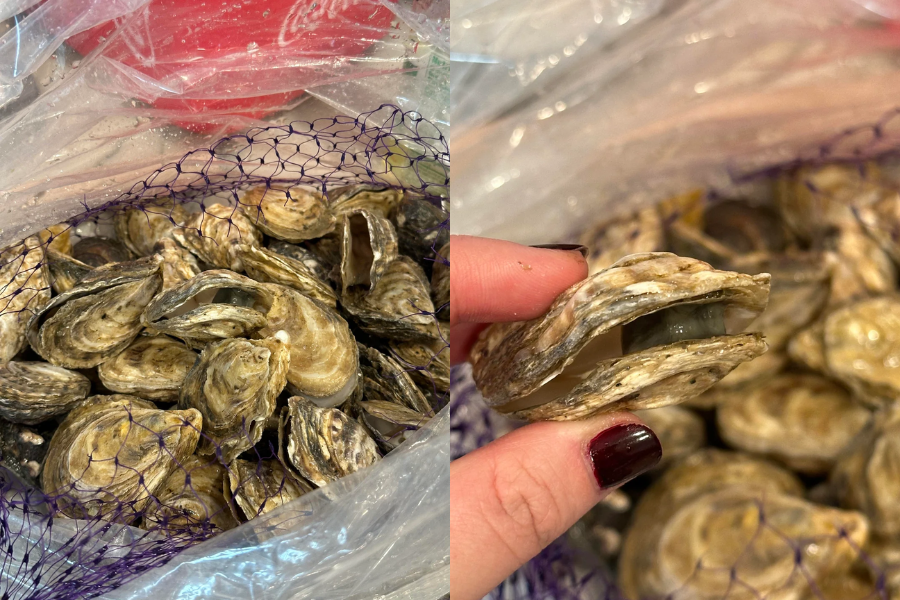
Want cleaner oysters in less time? Wash them in carbonated water. The bubbles dislodge sand and grit more effectively than salt or flour alone.
It’s a chemical reaction with a practical payoff—carbonation agitates debris out of tiny crevices, giving you tender, squeaky-clean oysters.
Seafood pros love this hack. Your oysters taste purer, cook more evenly, and need less handling before they hit the pan.
Microwave Dried Anchovies Before Broth-Making

Before boiling anchovies for broth, zap them in the microwave for 30 seconds. It enhances their aroma and removes bitter edge—like a shortcut to deep ocean flavor.
The brief heat bloom releases hidden oils, intensifying umami. Korean cooks love this trick for anchovy-kelp broth in dishes like tteokguk and doenjang jjigae.
Small step, massive payoff. Your soups will gain a richness usually reserved for long, slow simmering. And it only takes half a minute.
Deodorize Your Hands with Vinegar
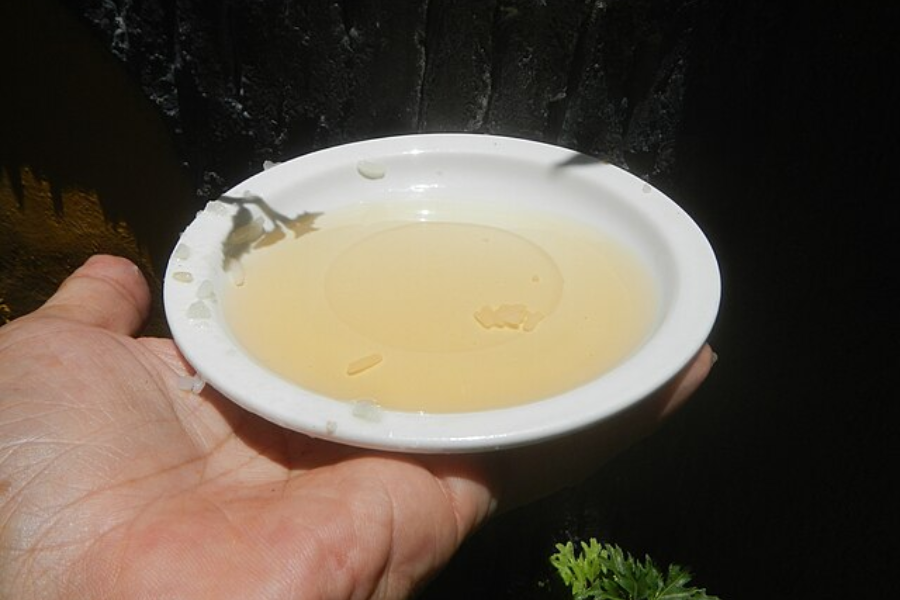
After chopping garlic, fish, or kimchi, rub your hands with vinegar. It instantly neutralizes pungent odors and leaves your skin fresh and clean.
Soap doesn’t always cut through fermented or fishy smells. Vinegar works faster and more effectively, especially for stubborn kitchen aromas.
It’s a simple, natural solution you’ll end up using all the time. No gimmicks—just chemistry doing its thing in your favor.
Use the Inside of a Banana Peel to Wipe Stainless Steel Pots

Before tossing that banana peel, use its soft inside to polish stainless steel. It removes streaks and residue while adding a natural, gentle shine.
The peel’s texture and potassium-rich oils cut through mineral stains without scratching. No harsh chemicals—just fruit-powered cleaning with surprisingly good results.
It’s green cleaning, literally. Your pots gleam, your hands stay safe, and your banana goes further than breakfast.
Cure Cucumbers in Ice Water and Salt Before Kimchi

Crunchy cucumber kimchi starts with a cure. Soak sliced cucumbers in salted ice water to tighten the texture and prep them for deeper flavor absorption.
The cold shock firms up flesh while salt draws out moisture, preventing sogginess after fermentation. It’s a vital step for crispness.
This hack separates soft cucumber pickles from restaurant-quality oi kimchi. It’s bright, refreshing, and snappy—just how it’s meant to be.
Wrap Wet Kimchi in Paper Towel Before Stir-Frying
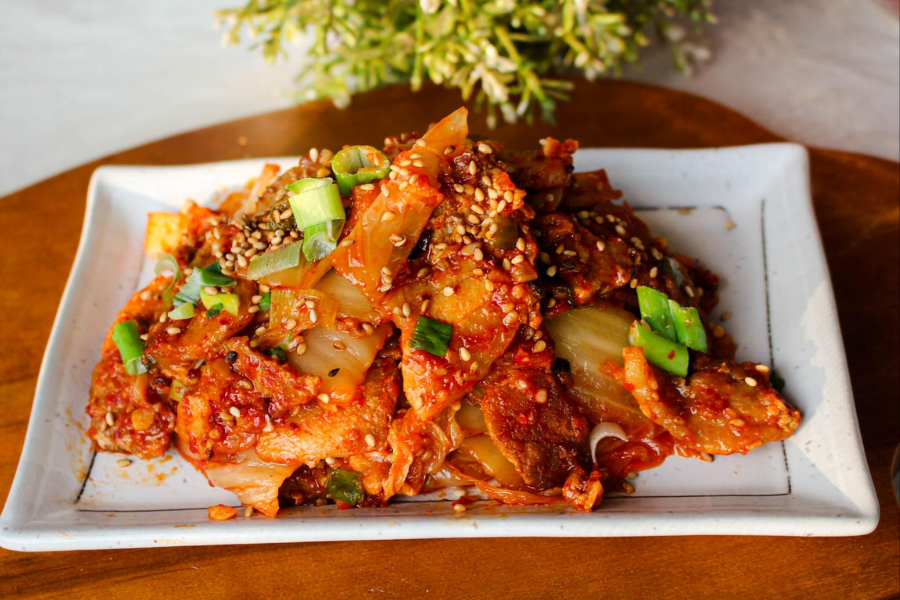
Too much brine makes stir-fried kimchi soggy. Wrap it in a paper towel first. This draws out excess liquid for better caramelization and bolder flavor.
Dry kimchi sears beautifully, giving you those rich, golden edges instead of a watery mess. It’s crucial for dishes like kimchi bokkeumbap or kimchi jjim.
This small prep trick transforms texture and taste. Your stir-fries will hit harder, look better, and deliver the punchy flavor you expect from aged kimchi.
Tame Kimchi Sourness with Raw Onion

When kimchi ferments too long, its sourness can overpower. Place a raw onion half into the jar. It balances acidity without dulling the complex flavor.
The onion acts like a natural buffer, absorbing excess sharpness and subtly sweetening the brine. It’s an effortless fix that doesn’t require re-making your batch.
This tip is especially useful for older kimchi—don’t toss it. One onion can rescue an entire jar and make it usable again for stews or rice.
Store Kimchi in Glass, Not Plastic

Storing kimchi in plastic? Stop. Glass containers preserve freshness and prevent odor leakage, while avoiding stains that ruin plastic over time.
Kimchi’s powerful brine eats away at plastic, leaving behind smells and orange residue. Glass keeps it sealed, stable, and perfectly pungent without side effects.
Your fridge will thank you, and so will your future recipes—clean, untainted storage means consistently great-tasting kimchi every time.
Freeze Kimchi Juice in Ice Trays

Don’t pour out that leftover kimchi juice! It’s packed with fermented goodness. Freeze it in ice trays to create instant flavor boosters for soups and stir-fries.
Each cube adds tangy depth and a punch of umami to almost any dish. It’s a secret weapon many Korean home cooks swear by.
You’re not just saving waste—you’re bottling time-tested flavor. A single cube turns bland into bold in seconds. This trick’s a keeper for spice lovers.
Rub Salt on Knife Blade Before Cutting Sticky Foods
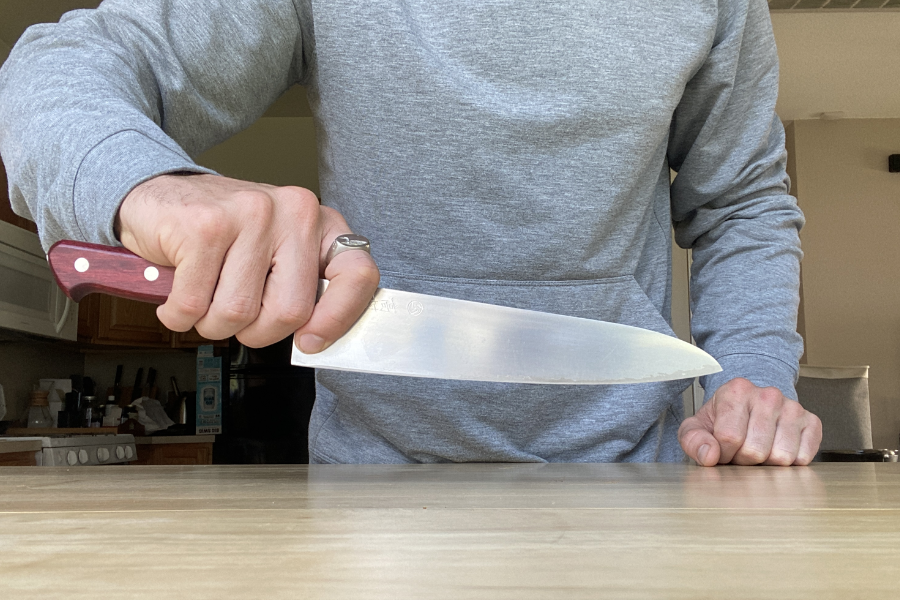
Need to slice sticky rice, tteok, or dried fruits? Rub a bit of salt on your knife blade before slicing. It reduces friction and stops gunk from clinging to your knife.
The salt creates a barrier between the blade and food, making cuts smoother and cleaner. You’ll slice evenly without constantly rinsing or wiping.
It’s a tiny prep step that saves major time. Your knife stays clean, your hands stay dry, and your cuts look professional every single time.
Use Dried Jujube Seeds for Fragrance
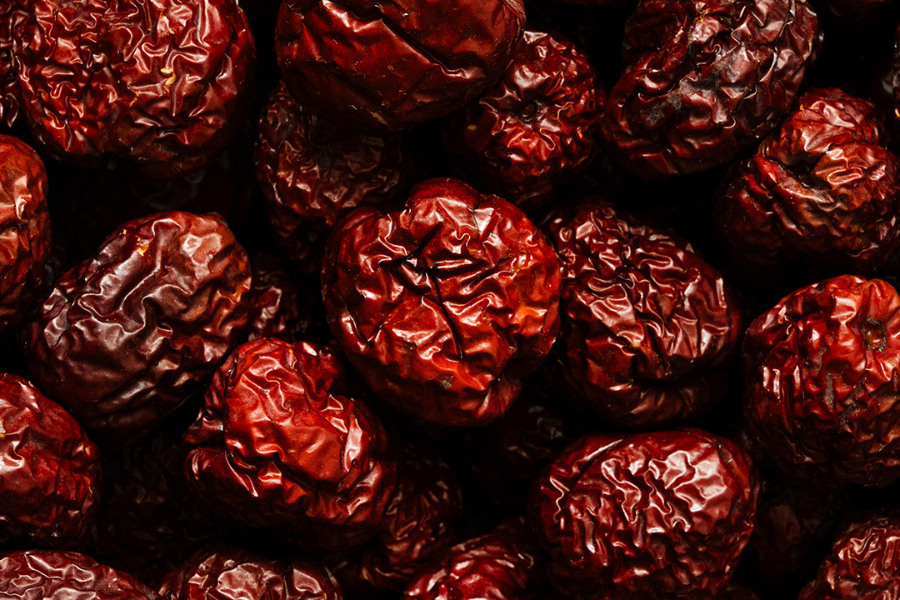
Don’t throw away jujube seeds! Dry them out and drop a few into rice or broth—they infuse your dishes with a warm, honeyed herbal fragrance.
The scent is subtle but transformative, adding a calming depth to everything from plain rice to winter stews. It’s a secret from temple kitchens and grandmothers alike.
This hack turns scraps into gold. You’re not just reusing—you’re upgrading, bringing a soft medicinal aroma that lingers pleasantly in food and your home.
Use a Dried Chili to Prevent Rice Bugs
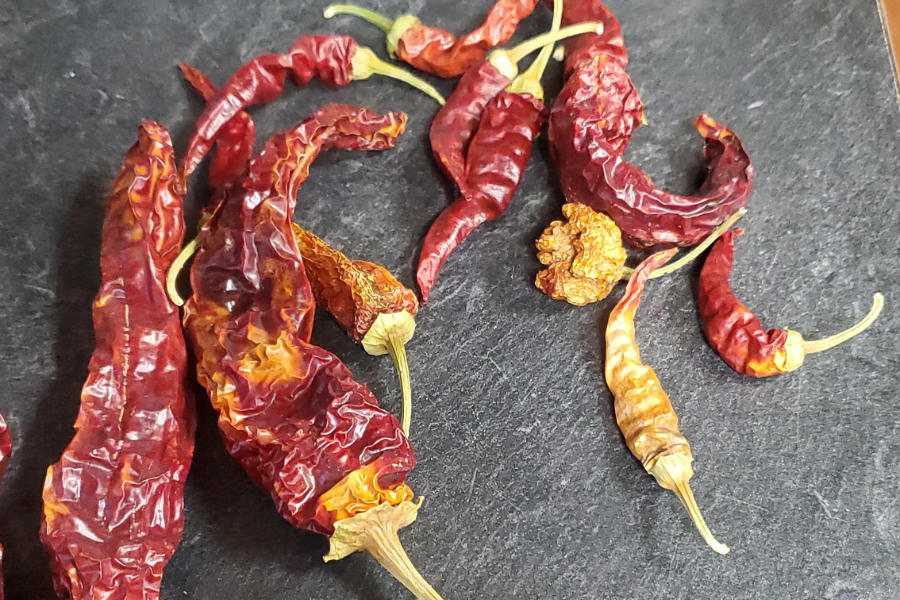
A dried chili in your rice jar does more than spice. It naturally repels weevils and insects—no chemicals or refrigeration are needed.
Korean households have relied on this folk method for generations. It works especially well in warm climates or open pantries where pests love to sneak in.
You’re protecting your grains the old-fashioned way—with a little heat and a lot of wisdom. Try it—you’ll be surprised how well it works.
Store Gochujang Upside Down
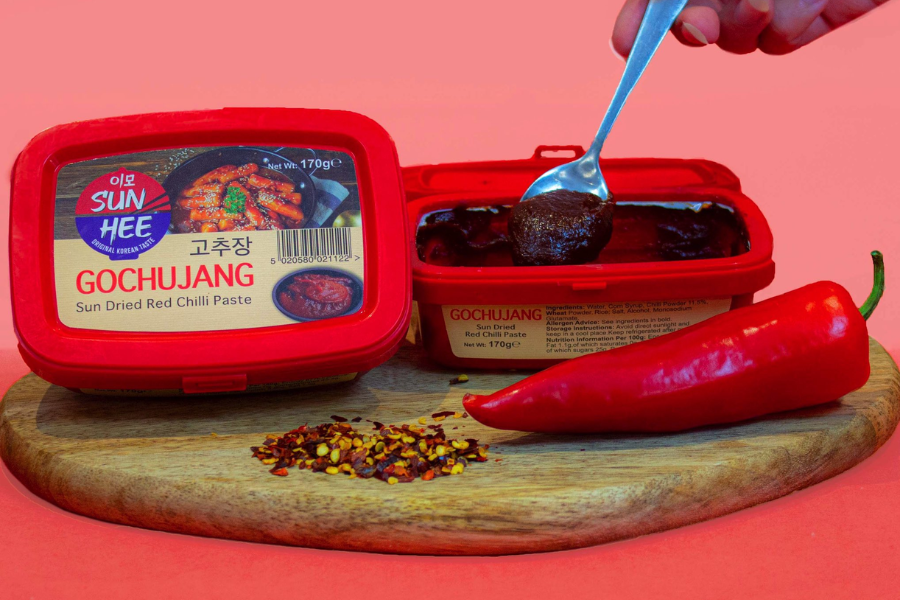
Mold on your gochujang? Flip it upside down in the fridge. This simple storage trick creates a vacuum seal that blocks mold growth at the surface.
It’s low-tech food science at work. Less air contact means slower spoilage, especially in high-humidity kitchens or long-term storage.
The paste stays vibrant, safe, and lasts longer. One flip can save you money and flavor, all without opening a new tub too soon.
Let Ssamjang Sit for 2 Days After Mixing
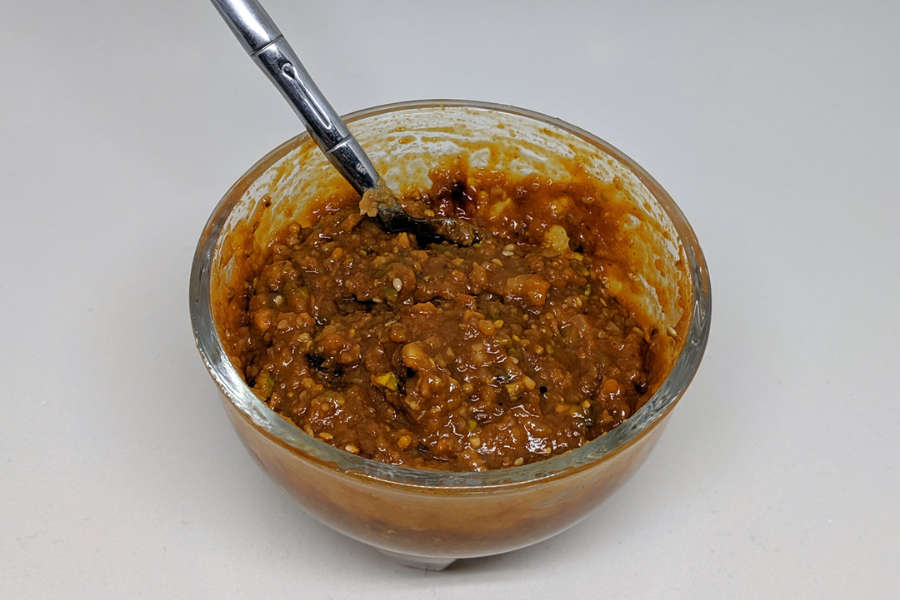
Freshly mixed ssamjang tastes good, but wait two days and it’s incredible. Letting it sit deepens the flavors and smooths the salty-sharp edges of raw ingredients.
Resting time allows gochujang, doenjang, garlic, and sesame to meld into a unified, balanced dip. It transforms harshness into savory harmony.
Patience pays off. A quick mix is decent, but an aged ssamjang brings that restaurant-level richness you didn’t know you could recreate at home.
Use Kelp Powder Instead of MSG
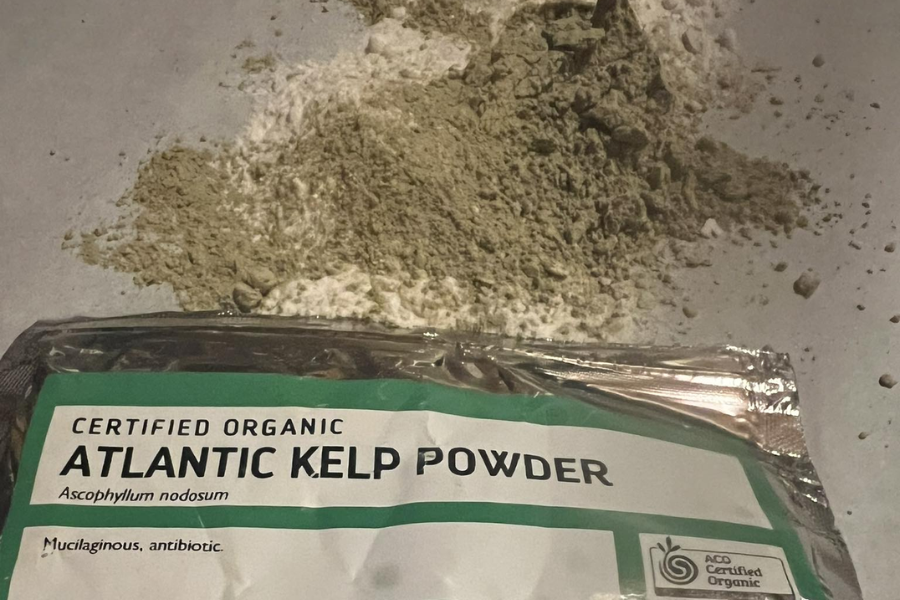
For deep, oceanic umami without additives, try kelp powder. It’s a natural substitute for MSG and adds a subtle, savory note to soups and stews.
Just a small pinch transforms bland broth into something complex. It’s mineral-rich, healthy, and used in temple cuisine for a reason—pure plant-based flavor.
Kelp powder is especially helpful for vegetarians craving richness without meat. A must-have pantry staple for anyone chasing that authentic Korean depth.
Keep Toasted Sesame Seeds Ready

Pre-toast a batch of sesame seeds and store them in a jar—they’re flavor gold. Just a sprinkle can finish rice, soups, salads, or stir-fried sides.
The nutty aroma of freshly toasted seeds adds dimension to every dish. It’s a humble yet transformative final touch found in nearly every Korean kitchen.
Having them on hand saves time and instantly boosts flavor. Think of it as your secret finishing weapon, ready for any culinary occasion.
Let Hot Soups Cool Before Refrigerating

Putting piping-hot soup directly into the fridge can cause spoilage. Allow it to cool to room temperature first; this prevents sourness and keeps bacteria from thriving.
Rapid cooling in the fridge traps heat and condensation inside the container, affecting taste and shelf life. A slow, natural cool keeps flavors intact.
This tip isn’t just traditional—it’s smart food safety. Your jjigae and stews stay fresh longer, taste better, and require zero re-cooking the next day.
